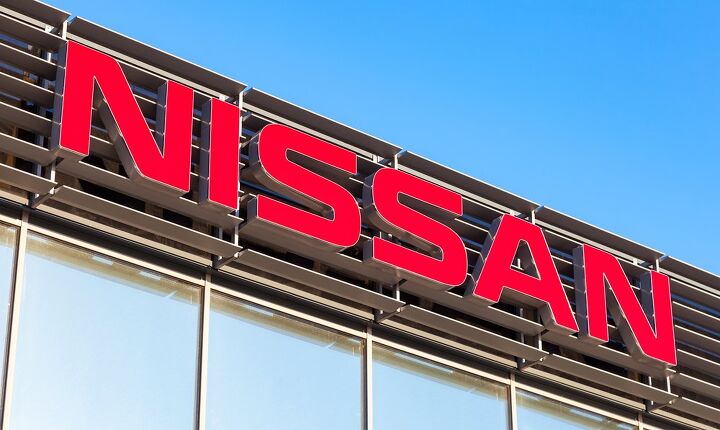'Do or Die': Nissan Buying Out U.S. Employees As Cost-cutting Spree Continues

In an effort to reduce expenses and lower its headcount, an embattled Nissan is offering buyouts to its U.S. employees.
It’s rumored that Nissan plans to eliminate thousands of white-collar jobs and shutter several global factories as part of its effort to improve the company balance sheet. Going into 2020 weak and not expecting to make any money, the automaker is turning its focus to restructuring for at least the next 24 months.
“To adapt to current business needs and improve efficiencies, Nissan will offer voluntary separation packages to eligible U.S.-based employees,” the company said in a statement.
Most of the buyout details were withheld. Nissan only verified that the separation packages will be offered to employees over the age of 52, regardless of whether they stand on the line or sit at a desk. But the company said over the summer that it needed to cut 12,5000 jobs, plenty of which are bound to be located in the U.S.
Reuters framed the situation as truly ominous, reporting that the company hopes to eliminate over 4,300 desk jobs (mostly in Europe and the U.S.) and close two manufacturing sites as part of broader plans to add at least 480 billion yen ($4.4 billion) to its bottom line by 2023. It also presumed Nissan will cut down its lineup (for a time) while also reducing the number of options and trims available. The latter prediction, judging by new-for-2020 models, is already coming true. Marketing efforts are reported to receive less funding, as well.
“The situation is dire. It’s do or die,” a person close to Nissan’s senior management and the company’s board told the outlet.
From Reuters:
Most of the planned cuts and measures to enhance efficiency were presented to Nissan’s board in November and received its general blessing, two sources said.
A Nissan Motor Co spokeswoman declined to comment on new restructuring measures or the view that weaker-than-expected sales were the catalyst for a global overhaul.
Under Ghosn, Nissan embarked on a global expansion, boosting capacity to add new models, driving more decidedly into markets such as India, Russia, South Africa and southeast Asia and spending heavily on promotions and marketing to hit targets.
Now, many of those models are missing sales goals and executives at Nissan’s Yokohama headquarters estimate up to 40 [percent] of its global manufacturing capacity is unused, or under-used.
Internal documents obtained by Automotive News provide some additional insight. Beginning in July, the company will implement a smaller regional sales structure by eliminating the number of sales offices from eight to six. The manufacturer is urging dealers to keep their cool, saying this is something a lot of automakers are dealing with.
“Like many other automotive companies, Nissan North America is taking proactive steps to assess our structure, workflow, and operational efficiencies amid a challenging industry environment,” senior vice president Airton Cousseau wrote in a letter to dealers on Tuesday. “This reorganization will create office synergies that will enable a leaner organization while still focusing on dealer profitability and your ability to continue providing a quality customer experience. You will continue to receive all the support you need.”
[Image: FotograFFF/Shutterstock]

A staunch consumer advocate tracking industry trends and regulation. Before joining TTAC, Matt spent a decade working for marketing and research firms based in NYC. Clients included several of the world’s largest automakers, global tire brands, and aftermarket part suppliers. Dissatisfied with the corporate world and resentful of having to wear suits everyday, he pivoted to writing about cars. Since then, that man has become an ardent supporter of the right-to-repair movement, been interviewed on the auto industry by national radio broadcasts, driven more rental cars than anyone ever should, participated in amateur rallying events, and received the requisite minimum training as sanctioned by the SCCA. Handy with a wrench, Matt grew up surrounded by Detroit auto workers and managed to get a pizza delivery job before he was legally eligible. He later found himself driving box trucks through Manhattan, guaranteeing future sympathy for actual truckers. He continues to conduct research pertaining to the automotive sector as an independent contractor and has since moved back to his native Michigan, closer to where the cars are born. A contrarian, Matt claims to prefer understeer — stating that front and all-wheel drive vehicles cater best to his driving style.
More by Matt Posky
Latest Car Reviews
Read moreLatest Product Reviews
Read moreRecent Comments
- Corey Lewis Facing rearwards and typing while in motion. I'll be sick in 4 minutes or less.
- Ajla It's a tricky situation. If public charging is ubiquitous and reliable then range doesn't matter nearly as much. However they likely don't need to be as numerous as fuel pumps because of the home/work charging ability. But then there still might need to be "surge supply" of public chargers for things like holidays. Then there's the idea of chargers with towing accessibility. A lack of visible charging infrastructure might slow the adoption of EVs as well. Having an EV with a 600+ mile range would fix a lot of the above but that option doesn't seem to be economically feasible.
- 28-Cars-Later I'm getting a Knight Rider vibe... or is it more Knightboat?
- 28-Cars-Later "the person would likely be involved in taking the Corvette to the next level with full electrification."Chevrolet sold 37,224 C8s in 2023 starting at $65,895 in North America (no word on other regions) while Porsche sold 40,629 Taycans worldwide starting at $99,400. I imagine per unit Porsche/VAG profit at $100K+ but was far as R&D payback and other sunk costs I cannot say. I remember reading the new C8 platform was designed for hybrids (or something to that effect) so I expect Chevrolet to experiment with different model types but I don't expect Corvette to become the Taycan. If that is the expectation, I think it will ride off into the sunset because GM is that incompetent/impotent. Additional: In ten years outside of wrecks I expect a majority of C8s to still be running and economically roadworthy, I do not expect that of Taycans.
- Tassos Jong-iL Not all martyrs see divinity, but at least you tried.


































Comments
Join the conversation
I suggest Nissan avoid the dramatic cuts that GM made. Those cuts have taken GM from 1st to fifth place in international sales in just a decade. Don't go from being a powerhouse to a minnow like GM.
As other's have said, definitely past their 80's and 90's highs with interesting and quality products. Since then it's been a slow decline. No loss if they crash and burn, excuse the pun :)